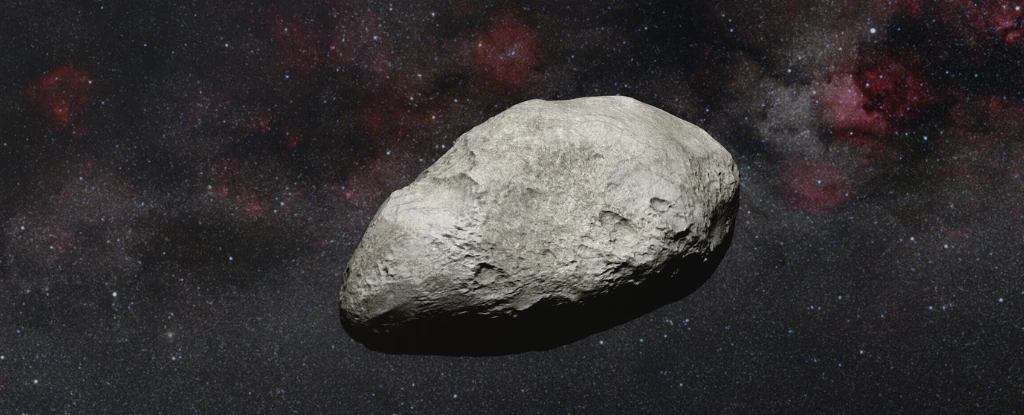
Introduction
Imagine looking up at the night sky and seeing 2nd moons. It sounds like science fiction, right? For years, astronomers have been fascinated by the idea that Earth could have more than one moon. Recently, this concept has come to light again, but in a more scientific context, with discussions about a possible “2nd Moon ” of Earth—Kamoʻoalewa. But does Earth have a 2nd Moon, or is it just a misinterpretation of astronomical data? Let’s dive into this mystery and explore what science has to say.
The Definition of a Moon
Before we talk about a 2nd Moon, let’s get one thing straight—what exactly is a moon? A moon, or natural satellite, is any celestial body that orbits a planet. Earth’s moon, the one we’ve all gazed at since childhood, is the most familiar example. It’s big, round, and a constant companion of Earth. But does Earth only have this one moon?
The Origin of the “2nd Moon” Idea
The concept of Earth having more than one moon isn’t new. Ancient cultures speculated about additional moons, but these ideas were more mythological than scientific. However, in the 20th century, astronomers began noticing objects that shared Earth’s orbit, leading to the hypothesis of other moons or quasi-satellites that are temporarily caught in Earth’s gravitational pull.

What is Kamoʻoalewa?
Kamoʻoalewa is a relatively discovery in the astronomical world. Discovered in 2016, it’s classified as a quasi-satellite, meaning it orbits the Sun but remains close to Earth. Kamoʻoalewa has a unique orbit, which makes it appear to be a 2nd Moon.
How Kamoʻoalewa Differs From Our Moon
While Kamoʻoalewa might seem like Earth’s 2nd Moon, it is very different from the Moon we know. For one, it’s tiny—about the size of a Ferris wheel, with a diameter of just 40 to 100 meters. Our Moon, by comparison, is a massive 3,474 kilometers wide. Kamoʻoalewa also has a much more elliptical orbit, making it a quasi-satellite rather than a true moon.
Quasi-Satellites Explained
A quasi-satellite is a space object that orbits the Sun in a similar way to how Earth does. These objects, like Kamoʻoalewa, can seem to orbit Earth due to their relative motion, but they aren’t bound to Earth like a true moon. While Kamoʻoalewa is gravitationally influenced by Earth, it’s not permanently caught in Earth’s orbit.
Is Kamoʻoalewa Earth’s 2nd Moon?
There’s a bit of debate on whether Kamoʻoalewa qualifies as Earth’s 2nd Moon. Since it doesn’t orbit Earth in the same way our Moon does, many astronomers argue that it shouldn’t be classified as a 2nd Moon. However, its proximity and orbital pattern make it feel like one. So, while it’s not a traditional moon, Kamoʻoalewa still plays a fascinating role in Earth’s celestial neighborhood.
Other “Moons” of Earth
Kamoʻoalewa isn’t the only object that has been mistakenly referred to as Earth’s 2nd Moon. Over the years, several asteroids and near-Earth objects (NEOs) have briefly come into Earth’s orbit, only to drift away. These are often referred to as “mini-moons,” but they are temporary and much smaller than our Moon.
Temporary Moons: A Short History
Earth occasionally captures small asteroids in its gravity, temporarily turning them into mini-moons. These temporary moons don’t last long—usually just a few years—before they break free of Earth’s gravitational pull and continue their journey around the Sun. Examples include 2006 RH120, a small asteroid that orbited Earth from 2006 to 2007.
Impacts of a Second Moon
What if Earth had a permanent second moon? While it’s fun to imagine, having a 2nd Moon would cause significant changes to Earth’s tides, gravitational forces, and even the way we plan space missions. The gravitational pull of two moons could also affect satellites and space travel, making it harder to explore beyond our atmosphere.
The Role of Kamoʻoalewa in Space Missions
NASA has already expressed interest in Kamoʻoalewa, planning potential missions to study it further. Because of its proximity to Earth, Kamoʻoalewa could serve as a valuable target for future space exploration, providing insights into near-Earth objects and their composition.

Other Planets and Their Moons
Earth might seem special with just one moon, but other planets have multiple moons—some even have dozens. Jupiter, for example, has 79 moons! Compared to these gas giants, Earth’s moon system seems relatively simple. However, the Moon and quasi-satellites like Kamoʻoalewa make Earth unique in their way.
Public Fascination with the Second Moon Concept
The idea of Earth having two moons has long fascinated the public, inspiring countless books, movies, and artworks. From science fiction stories to philosophical discussions, the concept of multiple moons continues to capture our imaginations. Could this fascination fuel future space exploration?
The Future of Quasi-Satellites and Space Research
As space technology advances, astronomers hope to learn more about quasi-satellites like Kamoʻoalewa. Missions to study these objects could provide valuable data on the formation of celestial bodies, the evolution of the solar system, and even resources for future space colonies.

Conclusion
So, does Earth have a 2nd Moon? While Kamoʻoalewa isn’t a true moon, it’s the closest thing we’ve got. Its orbit and proximity make it a fascinating object of study, and while it may not share all the characteristics of our Moon, it adds to the dynamic nature of Earth’s neighborhood in space. Whether you consider it a 2nd Moon or not, one thing is for sure—Kamoʻoalewa is a cosmic wonder worth keeping an eye on.
Also Read: The Magic of Malki Kawa: Exploring the World of a Renowned Sports Agent








1 thought on “The Discovery of Earth 2nd Moon: Fact or Fiction?”
Comments are closed.